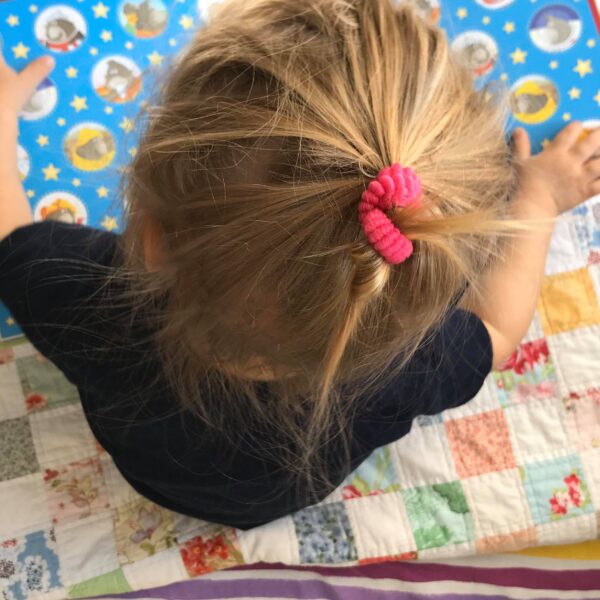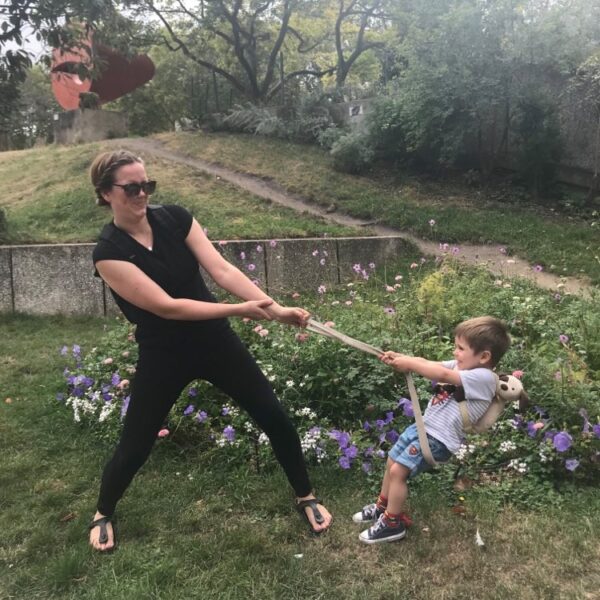
We were gifted copies of ‘That’s My Willy’ and ‘What’s Down There?’ to review. The first two books from the ‘Fred & Woody’s Fantastic World’ series. Available for purchase now from most bookstores.

Fred & Woody’s Fantastic World
Written and illustrated by Alex Waldron. The Fantastic World books were inspired by the author’s own children (Fred and Woody) and those he supports through the nursery care company he runs. Alex wanted to create a series of engaging books that aid conversations parents, carers and teachers often find difficult to approach.

“That’s MY willy and it belongs to ME. My penis dingles and dangles and it helps me to pee.”

Awkwo Mo Mo
And I’m going to be straight up with you, when they landed on my doorstep they made me feel a little awkward. But at 3 and ready to begin his journey into full time education these are conversations that Theon (and his sister soon enough) need to have. He’s noticed the differences between us all and as with everything he’s intrigued to know why.
It wasn’t that long ago that Theon was a really shy, introverted toddler who suffered with separation anxiety. As parents we worked hard to bolster his confidence and get him to feel safe socialising. Now we’re in the midst of ‘Stranger Danger’. A pretty difficult topic to tackle when you’ve just spent three years convincing your child to open up to everyone. Books like the ‘Fantastic World’ series help to spark these conversations with out over adulting them!
That’s My Willy
I know there’s been quite a bit of debate on twitter too over the book titles:
‘That’s My Willy’, ‘What’s Down There?’
Which I have to say for me are child like quotes rather than specified titles. P’s favourite phrase at the minute is “What’s that?” as she points at various parts of her body. And when you read the books what’s instantly clear is that Alex has written these books from the view point of his two little boys, in order to give a true, child perspective. He not only shares their thoughts and questions, but also uses the story to teach both adult and child alike the correct terminology. So, don’t judge a book and all that!
“But what’s down there? What’s its name? Ours is penis but yours isn’t the same. A vulva? A vagina? I’m not quite sure. I’ve heard it called lots of things before:
‘Front bottom’ ‘Twinkle’ ‘Foof’ ‘Bits’ ‘Flower’ ‘Nonny’ ‘Mini’
All the grown-ups make up cute little names. But nobody seems to call it the same.”
Front Bottom Line
What I’d actually argue is how flippant we are over boys and their ‘parts’ and how more understanding we are of girls and their right to keep their personal space and parts, private.
In our house all genitals (yes I know that means external, reproductive organs) have the generic name of ‘wees’. Because at 1 and even 3 it’s easy to say and highlights their purpose (from a child’s perspective). You may disagree, but I think the whole point to all of this is to open discussions on topics that in the past have remained too awkward and divisive to tackle.

These books empower children and those who’s care they receive. For me that’s enough (for now). I’m the daughter of a Midwife and was raised during a time when ‘Sex Ed’ was a part of the curriculum as standard. But, it was clinical and so overly to the point it was alienating. I remember after every lesson feeling that I never wanted to talk to my parents on these topics, or anyone for that. Which set a standard for me in later years when I actually needed to.
Children don’t need a grown ups perspective on sex or relationships. They need relatable answers to their questions. In a way that allows their intrigue and confidence to develop with them into young adulthood and right the way through their independent adult lives. That encourages them to explore themselves and others in a safe way.
Here’s to always having the answers or at least the tools to discus the questions!
What are your thoughts? Don’t keep mum!
Berrit x


I like the sound of these books and I think this is an important topic to discuss with children. We’re quite comfortable with the correct anatomical terms in our house (I used to be a midwife so found it interesting to read your perspective as a midwife’s daughter!) and we’ve had several conversations about privacy and personal space. It’s good that the books are written from a child’s perspective as well as mentioning all the various terms that adults and other children might use. #KidsandKreativity
Yeah I think the key is for all conversations (no matter how important or serious) is to just be natural, but I understand that for some people it can seem awkward or daunting to approach, books like these are great aids for normalising topics that some adults feel unsure of or uncomfortable about.
Thank you for a very thourough review, not shying away from the questions and tricky sides to this subject. I think the books seem reasonable in their approach x #KidsandKreativity
Thank you!
Really interesting books, and interesting subject! My kids are now 6 and 7 and are full of questions constantly as they both love science and biology! I never lie to them though, just don’t go into too much detail and if I feel their too young to know something I simply tell them to ask me again when they’re a bit older. So far it seems to be working, but who knows with this pareting lark! Thanks for linking up with #KidsandKreativity really hope to see you back next time x
I think what you’re doing sounds as perfect as us mere mortals can be! You know what’s best for your kids and really as long as we are honest and allow for open conversation with them so that they can come to us when they need answers or help, that’s all that matters! X
Hi there, just wanted to tell you, I enjoyed this post. It was inspiring.
Keep on posting! https://Caferule.com/
thank you!
Itvxbyvev
вызвать сантехника москва
Goodluck!